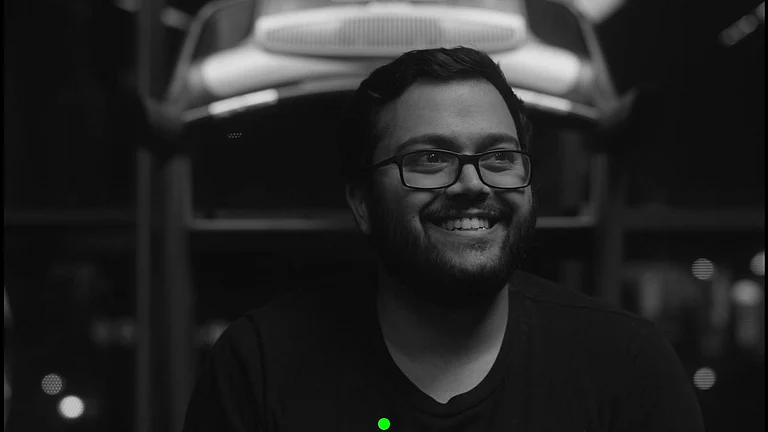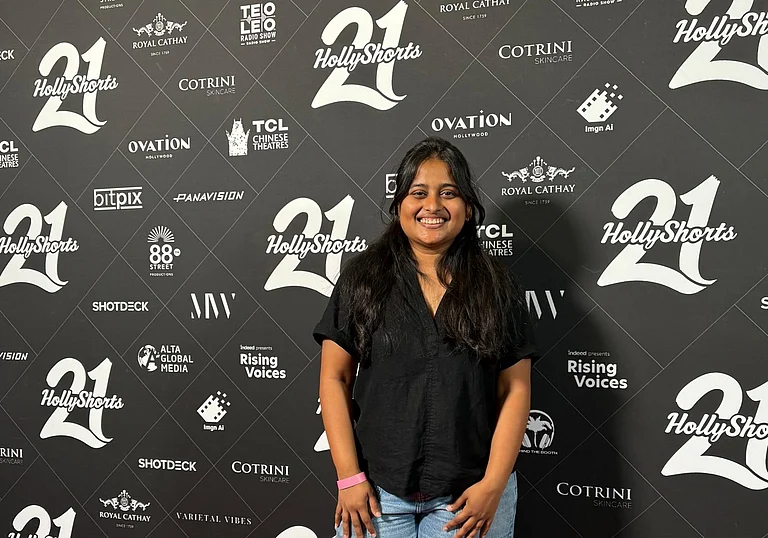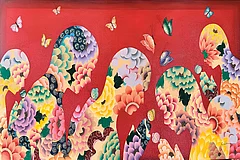As an adolescent movie buff in the early 1990s who became fascinated by old cinema largely through the work of Alfred Hitchcock, I had read enough to know that Hitchcock’s treatment of some of his leading ladies (and his gay or bisexual leading men) could be sadistic. And that Tippi Hedren had been a target of much bullying during the filming of The Birds. However, it wasn’t until a decade ago—partly through the Donald Spoto book Spellbound by Beauty—that I learnt of Hedren’s stronger allegations: that Hitchcock made clearly inappropriate demands on her, “expected me to make myself sexually accessible”, and played a role in damaging her film career when she didn’t acquiesce.
These are some thoughts that flitted through my mind as I processed this. If everything Hedren said was true—and there didn’t seem any reason to disbelieve her—then, in a fairer world than the one we live in, he should have been held to account in some clear-cut way, depending on the magnitude of the offence: if not prosecuted by law, then at least prevented from further unmonitored exercising of power.
Of course, this is hypothetical: whether it’s a supposedly backward 1963 or a supposedly enlightened 2024, powerful people with connections routinely get away with crimes. And allegations that by their nature involve private encounters have to be proven, which provides loopholes to the culpable.
Meanwhile, another scrambled thought: there had been whispers about Hitchcock’s nasty behaviour (criminal behaviour?) towards other performers like Vera Miles before he worked with Hedren. If he had been brought to book earlier, landmark films like Vertigo and Psycho may not have been made, or not made in the way that they were. This would have had a very large implication for film history, including the critical arguments of the 1960s, which centred on genre cinema.
It would also have had strong personal implications for me, because much of my life as a film obsessive—and eventually a writer—dates back to that time, at the age of 13, when I became deeply moved by Psycho, related to the sadness and darkness in it, and disappeared down a rabbit hole of cinematic analysis. Without that film to stimulate and console me, it’s likely that my personality and life would have developed in other ways than they did (this could be for bad, or for good, or a mix of both).
And that’s okay—if it helped some meaningful form of justice to be served, c’est la vie.
***
For me, that’s the pragmatic way of looking at these things. What I have never felt, though, is that in such cases the director’s films become tainted by association or have to somehow be detached from him, as if their finer, more elevated qualities—which many of us responded to—were independent of the “monster” who helmed them.
Hitchcock apart, I have always been interested in creative people who put a great deal of themselves—their lives, their scars, their best and worst dimensions—into their work. And this may be why I find most iterations of the art-vs-artist debate unsatisfying. The anguished question, “Can we separate the art from the artist?” has become a lazy formulation that tends to be answered in one of two ways:
I cannot separate the person from his art. Therefore, I will not consume any more of his output—for ethical reasons and out of unwillingness to contribute to his income. The art must be rejected as unsavoury; or,
I can separate the art from the artist, and have no issues with continuing to consume it. But this is with the understanding that the art exists in some vacuum, and has little or nothing to do with the artist’s “reality”.
Both positions carry a buried implication: that when an artist who has done terrible things creates a film (or book, or song) that shows positive human values; it means he was being hypocritical while creating it—concealing his true (bad) self. While there may be some truth to this in specific cases, on the whole, I find it a problematic view (to deploy a favourite Woke word). However repulsed we may be by someone’s actions, are we really saying that they couldn’t have more reflective, sensitive sides that they tapped into when doing their best work?
I have been using the pronoun “he”, since male artists are far more often the subjects of such discussion—but the most recent teeth-gnashing centres on the writer Alice Munro and her part-complicity in her daughter Andrea Skinner’s victimisation. And once again the language involved has been the smugly judgemental one that involves labelling someone as a “monster”—as if that was Munro’s sole, defining reality—and the difficulty of squaring this with her much-loved short fiction.
But what does “separating art from artist” even mean, when it comes to creative people who have produced what we think of as personal art—a novelist or painter working alone, or a studio filmmaker reworking themes within the constraints of his environment, or a more independent writer-director who has the freedom to make almost anything?
How can you possibly “separate” Hitchcock from (just one example) his critically acclaimed Vertigo—a film that gets so much of its power from the fact that its depiction of male sexual jealousy and insecurity (and the darker, more possessive aspects of “love”) reflects the way Hitchcock himself felt about some of his actresses? How do you separate V S Naipaul from An Area of Darkness? Woody Allen from Annie Hall? Or Marlon Brando—who, by many accounts, participated in the exploitation of Maria Schneider during the Last Tango in Paris shoot—from that animalistic shriek of “Stellaaa!!” in A Streetcar Named Desire: a scream that may come from a little boy terrified of losing his wife, or a patriarchal man who has just attacked that same wife, or both those people cohabiting in the same body.
Powerful people with connections routinely get away with crimes. And allegations that by their nature involve private encounters have to be proven, which provides loopholes to the culpable.
And how do you separate Roman Polanski from his work when he embedded his own history, fetishes and traumas into almost everything he did—not just in obviously personal films like The Pianist, but even in works adapted from enshrined literary material, like Macbeth (with its visualisation of the line “Macduff was from his mother’s womb untimely ripped”—just a year after Polanski’s heavily pregnant wife Sharon Tate was murdered).
In Polanski’s case, the facts of criminality are damning: he pleaded guilty to unlawful sex with a 13-year-old (probably to escape a bigger conviction) and has been a fugitive from the US justice system since the 1970s. It is completely reasonable to wish that he had been prosecuted and tucked away then—so what if that halted an important film career. But even if you choose to see him mainly as a predator, to erase his connection with the films he did make is a very strange position.
To be clear: I understand if someone is so triggered by the details of the lives of Polanski (or Hitchcock, or anyone else) that they wouldn’t further engage with their work—that is a personal, moral choice, and I have versions of those triggers myself. What I don’t understand is the removal of Polanski’s name from a 50th anniversary Blu-ray edition of Chinatown (as was done recently), with the virtue-signalling pretence that the man had no connection with a major film even though so much of him is in it.
***
Why, for instance, is it so hard to believe that people who have done heinous things in one context are also capable—over a long lifetime—of producing thoughtful, moving art; and, doing this honestly?
During a monologue at a recent stand-up performance in Delhi, actor-comedian Vir Das stated that there are two types of people: the ass****s and those who have to deal with the ass****s. The audience chortled (most of us were probably self-assured that we belonged to the latter category, and could picture our tormentors in the former). “And both those people,” Das continued, “are the same.” This time the laughs were still there, but more muted, as if people didn’t fully comprehend Das’ point about monsters within and outside us.
In intellectual circles, the line “everyone contains multitudes” is an oft-uttered one (plurality being a liberal commandment)—but looking through my social media feeds, and articles written by people whose work I have long admired, I feel very few of us face up to the full implications of that idea. Why, for instance, is it so hard to believe that people who have done heinous things in one context are also capable—over a long lifetime—of producing thoughtful, moving art; and, doing this honestly?
Linked to this aspect of the debate is something that has been common in recent cultural discourse: an intolerance for creative works that are very dark, pessimistic or non-affirmative in their worldview, or prominently use the lenses of unsympathetic characters. More than once, I have heard versions of the question, “Why was it necessary to make this film?” (The recent Animal has often been the subject, and the “liberal” bullying has been so shrill that a few perfectly sane and sensible people I know who liked the film—or could engage with it—have opted to keep their feelings hidden). Well, one answer is: it isn’t “necessary” to create any art at all—negative or affirmative. But if you do choose to create, with serious world-building, it is fine to tell a bleak, cynical story that doesn’t have comforting takeaways. Such art can make the world a little better, simply by being very well done, presenting a particular way of looking, and leaving us with uncomfortable questions that we might or might not be equipped to address.
Like many others who were seriously invested in books or films from an early age, I grew up believing that one of the important functions of art is to discomfit us and warn us about facile binaries such as “moral” and “monstrous”. During creative-writing classes, when the subject of ideology comes up, I occasionally cite the novel The Glass Pearls, by the great screenwriter Emeric Pressburger. Here was a Jewish man who had to flee Germany in the 1930s, whose mother died in a concentration camp, who lived in fear of Nazi persecution… and who also wrote this thriller about a Nazi in hiding in 1960s England, where the narrative’s impact hinges on us being able to feel for the protagonist—not to think that Karl Braun is a “good” person who should escape justice, but to see that he is a multi-dimensional human being with qualities all of us can relate to. We feel his sense of paranoia and persecution; his grief for a wife and child who died; and his boy-like excitement at a new romantic prospect. And these are all honest emotions. But many people who hold forth these days about art and artists, “toxic” and “progressive” films, wouldn’t know how to deal with Pressburger’s book—or thousands of others like it.
One of the more sensible things I have read in Munro-related chatter is from the writer Brandon Taylor, who points out that what most people love about Munro’s fiction is “the way she reveals how, at bottom, we are capable of true ugliness and viciousness”—and yet, despite this, the same readers are confused when they learn of “the common smallness” of someone they admired. “That, to me, betrays a lack of understanding of human nature, particularly the one advanced by Munro’s work,” Taylor says, and I agree. More pertinent than that hoary “art-artist” question is this: how has it become so easy to ignore the mirror, to outrage constantly over instances of misbehaviour that most of us would be capable of given the right (or wrong) circumstances—and to fail to recognise the things that good art (including the art made by people who do bad things) can tell us about ourselves?
(Views expressed are personal)
MORE FROM THIS ISSUE
Jai Arjun Singh, is an independent writer and critic. His books include Jaane Bhi do Yaaro: Seriously Funny Since 1983













.jpg?auto=format%2Ccompress&fit=max&format=webp&w=768&dpr=1.0)



















